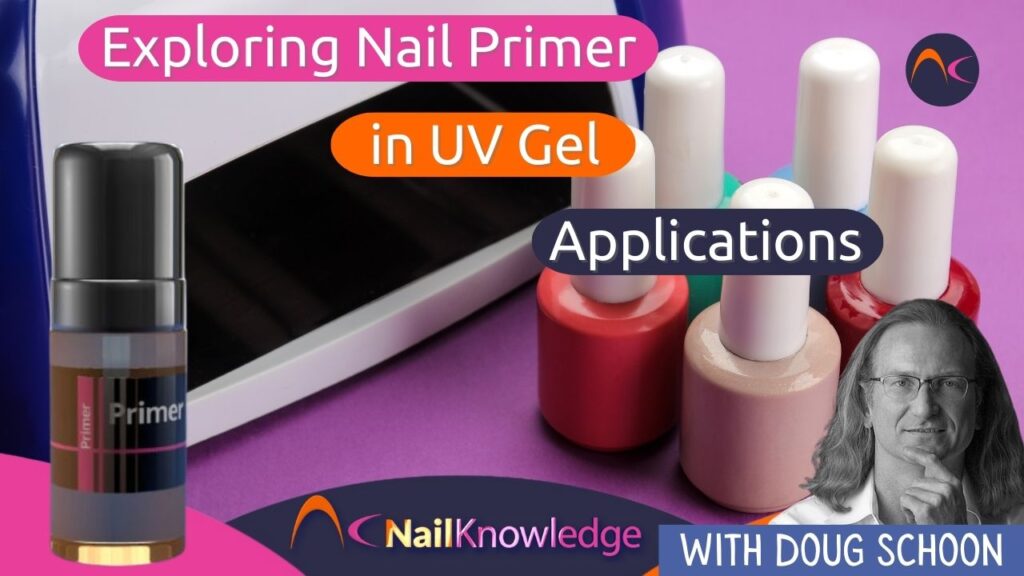In the realm of nail care and beautification, one recurring question perplexes both professionals and enthusiasts alike: Can nail primer serve as a suitable bonding layer for UV gel nails?
The practice of applying a nail primer pen on the natural nail, curing it, and subsequently applying the building gel has sparked curiosity regarding the necessity of a specifically formulated product.
Below Doug Schoon delves into the intricacies of nail primer usage in UV gel nail applications, shedding light on its effectiveness and the potential need for specialised formulations.
Addressing Concerns with Nail Primer Pens
There are several issues here, but I will try to address them all. First, I don’t recommend primer pens, since these are multi-use devices that can become contaminated with nail oils.
In my view, it is better to use a brush and bottle to be disposed of after use- not refill. Refilling allows oily contaminants to be transferred from the nail plate to the brush and into the product in the container.
Importance of Nail Bonders in UV Gel Applications
If UV gels require a nail bonder or primer layer which improves adhesion of the nail coating, then it should be used. Otherwise, I would not recommend this to be done. It is easy to see that too little adhesion causes lifting problems, but nail professionals often don’t stop to think about the problems caused by TOO MUCH adhesion.
Using a primer, when it is not needed can create too much adhesion, which makes removal more difficult, time-consuming and can increase the risks of nail damage related to removal processes.
Preventing Nail Damage: Proper Removal Techniques for Nail Coatings
Improper removal of nail coatings are top causes for nail damage. Many become impatient and use forceful techniques to more quickly remove the nail coatings. When this occurs and nail damage results, many explain away the damage by fooling customers into thinking their nails are just dry, when actually the nail surface has been damaged due to improper removal.
My main point is this, if the directions for the UV gel don’t “specifically” mention the use of a nail primer, then a primer should NOT be used.
Avoiding Nail Coating Lifting: The Role of Proper Technique over Nail Primers
Many times, a nail primer is used as a crutch to hide improper techniques. If the nail technician does a poor job preparing the nail plate, or they incorrectly apply the product, or they improperly cure with the wrong nail lamp, these can all result in lifting- premature loss of adhesion.
In these cases, the solution is NOT to use primer, instead, the best solution is to correct the issues that are causing the nail coatings to lift. If the UV gel doesn’t require the use of a primer in their directions or instructions, then don’t use one or this can create excessive adhesion and the nail coatings will be much more difficult and time consuming to remove.
Preventing Nail Damage: Alternatives to Nail Primers
Many nail technicians will forcibly remove the nail coatings- which leads to nail plate thinning, pitting, splits, cracks, peeling and surface white spots. Instead of using a nail primer, it would be wiser to seek out the reason for the low adhesion and solve the problem. Maybe the client’s nails need more careful cleaning and preparation. Or perhaps, the professional needs to invest in purchasing and using the correct nail lamp, the one designed for use with the UV gel. Or maybe they should take a manufacturer’s class to learn the proper application techniques.
Responsibility and Corrective Actions in Nail Care
Nail technicians are responsible for their actions and any harm caused by their inappropriate actions. Making up their own procedures and ignoring directions is a common reason for nail problems. Instead of using primers to correct problems created by incorrect use, nail professionals should address and solve the problem correctly.
Concerns with Nail Primer and UV Gel
Allergic Reactions and Industry Challenges
For instance, nail primer may improve adhesion when nail coatings aren’t fully cured, but then nail technicians or clients could develop allergic reactions to improperly cured dusts. The nail technician is not likely to realize they’re improperly curing, so they won’t take any steps to solve the real problem. Don’t make up your own directions/instructions. This is one of the greatest challenges facing the nail industry and a leading reason why most women are afraid of nail salon services and refuse to go to salons. Improper use of nail coatings, is the main reason why the nail industry isn’t growing and attracting more customers.


